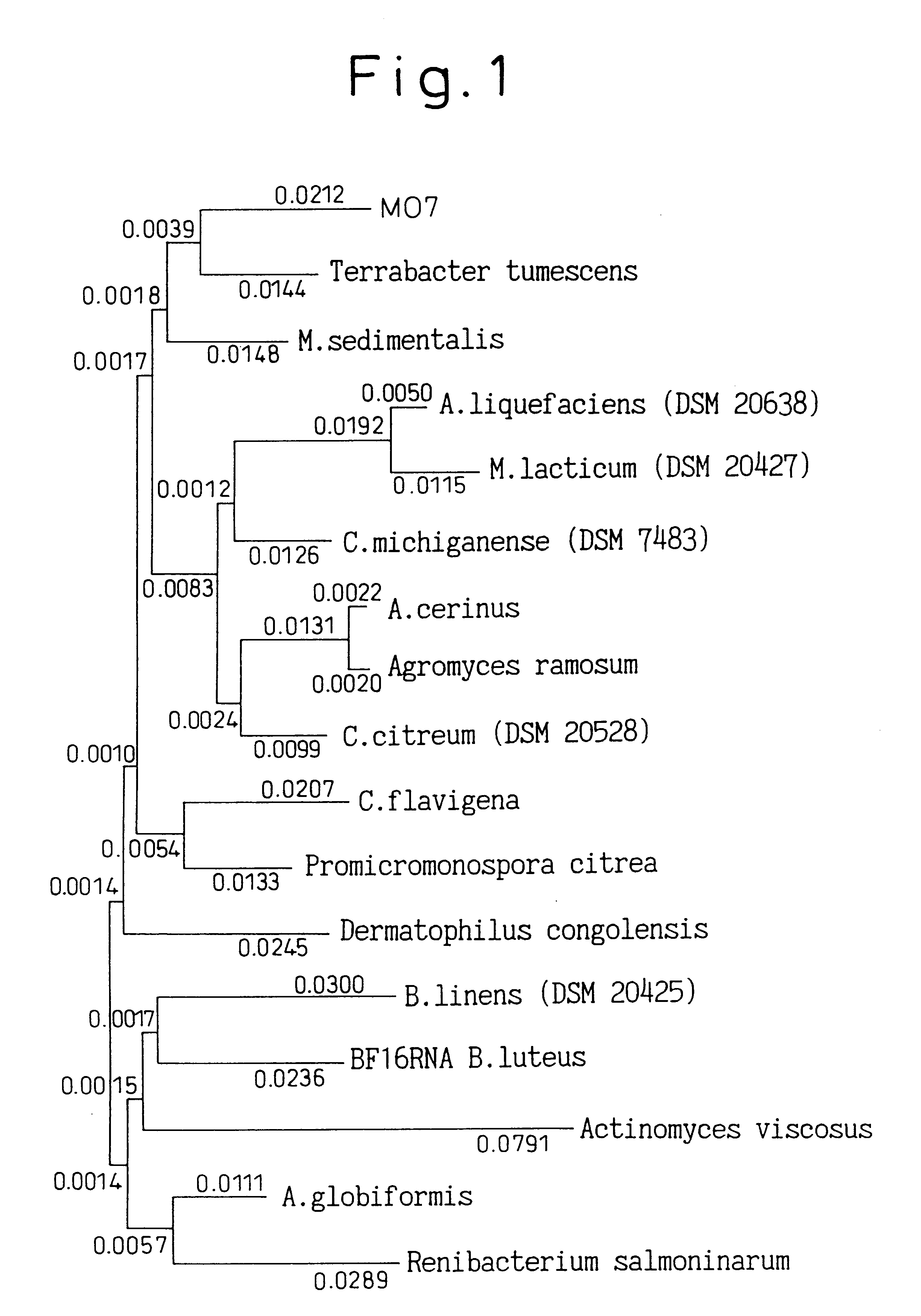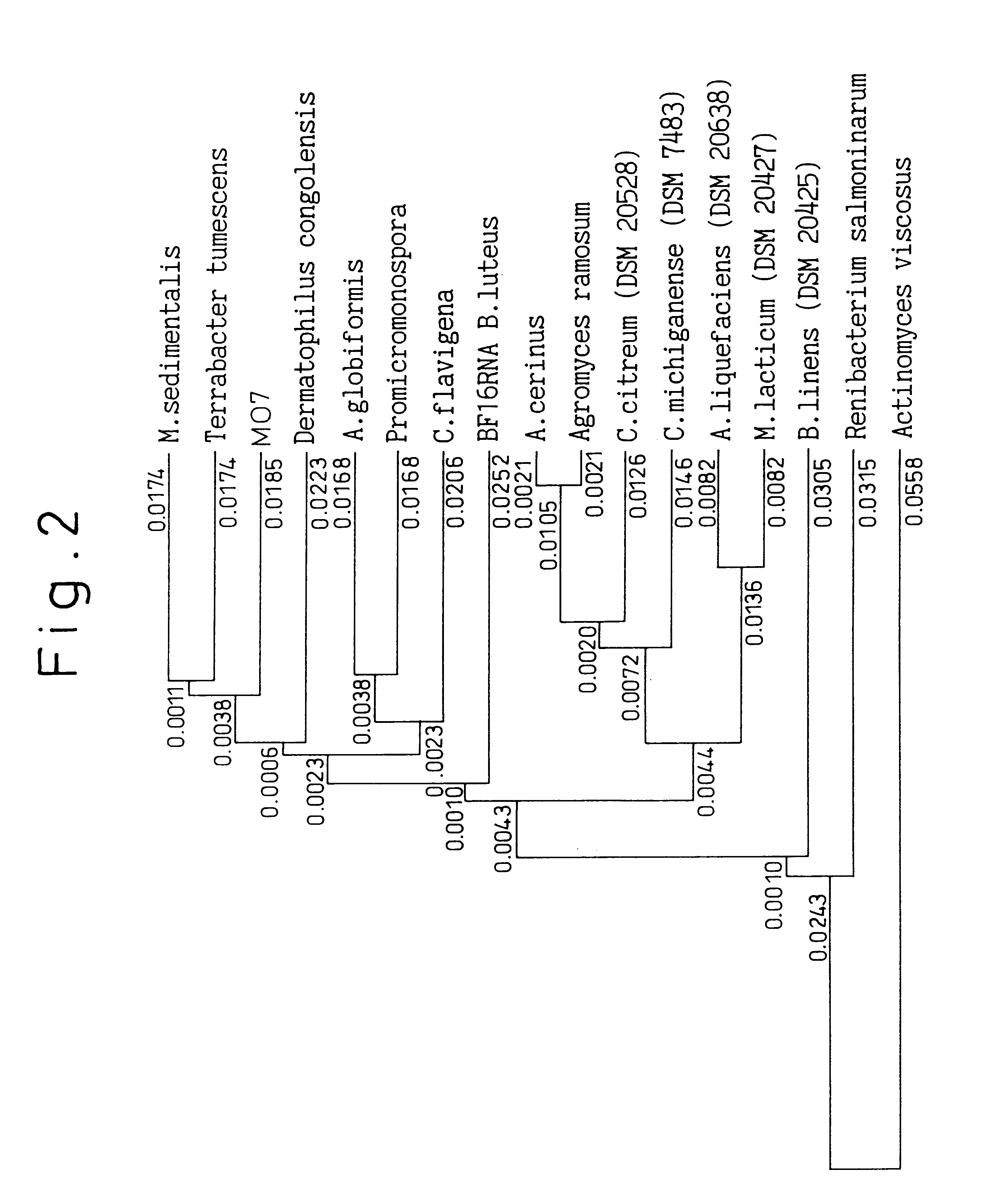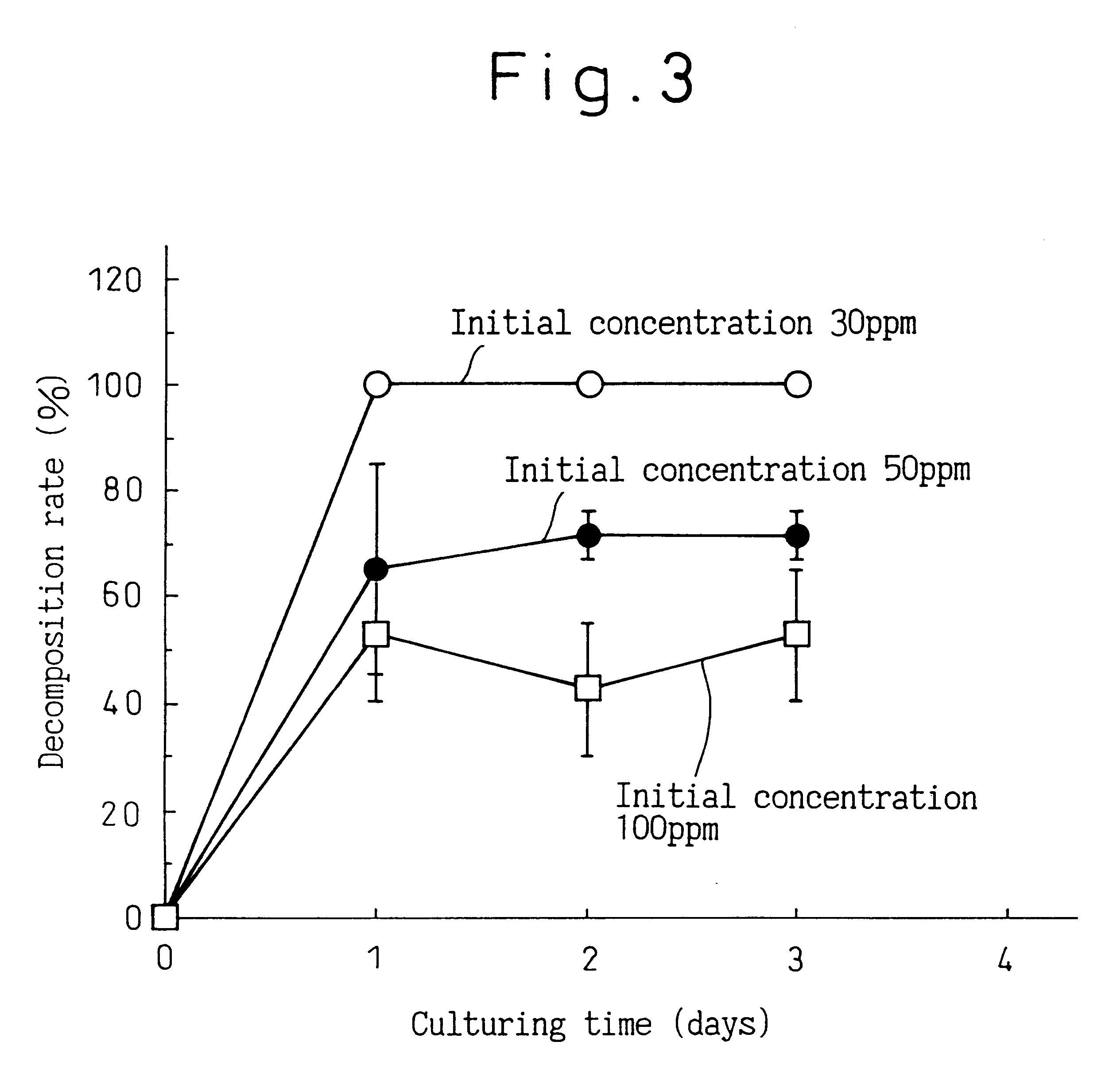Microorganism and method for environmental purification using the same
a technology of environmental purification and microorganisms, applied in the field of microorganisms and methods for environmental purification using the same, can solve the problems of environmental pollution, large purging power, and environmental pollution caused by organic chlorinated compounds, and achieve the effects of minimizing the effects on the ecological system, and reducing the effect of environmental pollution
- Summary
- Abstract
- Description
- Claims
- Application Information
AI Technical Summary
Benefits of technology
Problems solved by technology
Method used
Image
Examples
example 1
of the MO7 Strain as well as Cloning and Sequencing of 16S rDNA Thereof
The microorganisms for use in the present invention were isolated from the activated sludge taken at the waste water treatment plant in Aichi prefecture, Japan, in the following manner. A 0.1 ml aliquot of the harvested activated sludge collected was inoculated into 6 ml of the NMS medium containing 1% (v / v) of a vitamin solution (its composition is shown in Table 5) in a 30 ml vial, to which was added 500 ppm of phenol.
The vial was plugged with a butyl rubber septum and sealed with an aluminum cap, which was then cultured at 30.degree. C. under shaking at 160 r.p.m. for a period of from several days to about a dozen days. The culture in which turbidity, even the slightest turbidity, was observed was passaged to the same medium and subsequently cultured under shaking. The passage was repeated for a total of four times. After the fourth passage is over, the culture medium was diluted as appropriate and plated onto...
example 2
Into 100 ml of the NMS medium containing 0.05% yeast extract and 500 ppm of phenol contained in a 500 ml Erlenmeyer flask was inoculated with a platinum loopful of the colony of the microorganism of the present invention that had been stored by passage on the agar plate of 1.5% agar added to the NYG medium containing 500 ppm phenol, or 1.0 ml of the preculture liquid obtained by culturing overnight under shaking the microorganism of the present invention in the NYG medium containing 500 ppm of phenol at 30.degree. C. After culturing under shaking at 30.degree. C. at 130 r.p.m. for 3 days, the bacterial mass was harvested by centrifugation at 5000 r.p.m. for 10 minutes and then resuspended into the NMS medium having an amount equal to the culture medium.
The OD.sub.600 of the suspension was 0.5 (the cell count was 1.times.10.sup.9 c.f.u. / ml). 4 ml of the suspension of the bacterial mass was dispensed in a 20 ml vial and trichloroethylene was added thereto in such an amount that it bec...
example 3
The bacterial mass cultured in the same method as in Example 2 was harvested by centrifugation at. 5000 r.p.m. for 10 minutes and then resuspended to each of the M9 medium (Na.sub.2 HPO.sub.4.7H.sub.2 O 12.8 g / l, KH.sub.2 PO.sub.4 3 g / l, NaCl 0.5 g / l, NH.sub.4 Cl 1.0 g / l) prepared in varying pH's at an amount equal to that of the culture liquid. 4 ml of the suspension of the bacterial mass was dispensed in a 20 ml vial and trichloroethylene was added thereto in such an amount that it became 30 ppm after all the ingredients were dissolved in the liquid phase. The vial was plugged with a Teflon-coated butyl rubber septum and sealed with an aluminum cap. After culturing overnight at 30.degree. C. under shaking, the gas phase in the vial was regularly analyzed by a gaschromatograph equipped with an ECD detector. As shown in FIG. 4, the result indicated that at pH 5 or lower the activity is extremely decreased, whereas at pH 6 to 9 the efficiency of decomposition was as high as 100% and ...
PUM
| Property | Measurement | Unit |
|---|---|---|
| temperature | aaaaa | aaaaa |
| temperature | aaaaa | aaaaa |
| pH | aaaaa | aaaaa |
Abstract
Description
Claims
Application Information
 Login to View More
Login to View More - R&D
- Intellectual Property
- Life Sciences
- Materials
- Tech Scout
- Unparalleled Data Quality
- Higher Quality Content
- 60% Fewer Hallucinations
Browse by: Latest US Patents, China's latest patents, Technical Efficacy Thesaurus, Application Domain, Technology Topic, Popular Technical Reports.
© 2025 PatSnap. All rights reserved.Legal|Privacy policy|Modern Slavery Act Transparency Statement|Sitemap|About US| Contact US: help@patsnap.com



